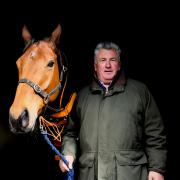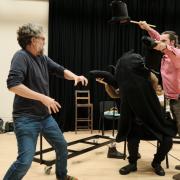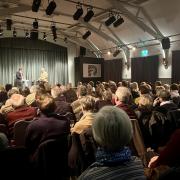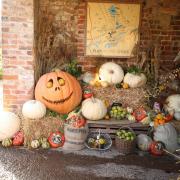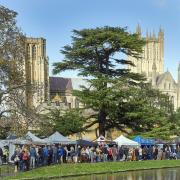Our columnist Tony Jackson ponders why the cuckoo may be in such decline in the West Country
Last year, in May, I heard a cuckoo call but once, a sad reminder that this bird, for so long considered the herald of spring, has sadly declined in recent years, so much so that the cuckoo is now on the Red List of endangered species; since the 1980s the population of this once so common bird has declined by around 65 per cent.
There was a time, not so long ago, when the repetitive calling of the cuckoo in late April and early May was a welcome and commonplace sign that summer was on the doorstep and all was well with the world.
How times have changed! My copy of The Birds of Devon (by D’Urban and Mathew 1892) notes that in some years, notably 1873 and 1881 “it is very numerous, usually arriving in southern Devon in the third or fourth week of April…in the extreme west of Somerset the 16th April goes by the name of ‘Cuckoo’s Day’, it being the date when the cry of the cuckoo may first be expected”. Those were indeed the days and certainly, in the 1960s and ’70s the call of the springtime cuckoo, and occasional sightings of the bird, was commonplace.
The cuckoo’s arrival in our land has, over the centuries, associated the bird with rural sayings and beliefs. In Cornwall, for instance, if you had money in your pocket when you heard a cuckoo call you would always remain prosperous, while in Somerset on hearing the first cuckoo boys would run away to ensure they would not be lazy. In Sussex to hear a cuckoo while in bed meant pending illness or death and for gardeners in the West Country it was once believed that “When you hear the cuckoo shout, it’s time to plant your tetties out”...a bit late perhaps!
It is, of course, the cuckoo’s parasitic habit of using other birds to host its single offspring which has made it, if not notorious in the bird world, then certainly singular, and it may well be that the reduction in numbers of several of its usual hosts may, in part, contribute to the decline of this fascinating bird.
Laying a single egg in the nest of an unwitting host, perhaps a reed warbler, dunnock or meadow pipit, the cuckoo then departs to let the unwitting surrogate mother hatch the offspring.
The cuckoo chick, like Topsy, grows and grows until, having ejected the legitimate hatchlings from the nest, it fills the entire space and, fed continually by its foster parents, is soon ready to fledge and fly. The decline of the cuckoo may be due to a combination of factors and while several of its host species have themselves diminished with fewer nesting opportunities for the cuckoo, the hairy caterpillars and other insects on which the bird feeds have also gone into free fall.
To add to the list of problems, it is suspected, as a result of radio tracking by the British Trust for Ornithology that one of the two main cuckoo migratory routes, via Spain, poses a considerable risk as the birds, heading to Central Africa, have to pass through extensive drought areas such as the Sahara.
Let’s hope that this May we will hear the cuckoo once again for it would be desperately sad to think that this bird, so entwined with our rural history, could one day vanish from our landscape:
In April come he will,
In May he sings all day,
In June he changes tune,
In July he prepares to fly,
In August he must go.




